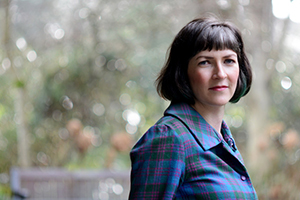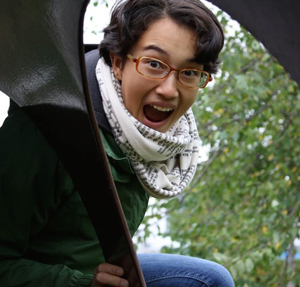What to Reveal: Holly Lam in Conversation with Stephanie Harrington

Stephanie Harrington, whose creative nonfiction piece "Fighter" appears in The Malahat Review's spring 2020 issue #210, discusses balancing structure with emotional stakes, being swept up in a story, and the journalism skills she brings to her creative nonfiction work in her Q&A with Malahat Review volunteer and past fiction board intern Holly Lam.
Stephanie Harrington earned an MFA in Creative Writing from the University of Victoria. In 2018 she was selected for the RBC Taylor Prize Emerging Writers Mentorship Program. She lives in Victoria.
In “Fighter,” the three rounds of your brother’s match are interwoven with personal history and contextual information about the sport, the locale. The snippets of backstory—of your brother’s time being incarcerated, of your family life—are succinct, poignant, and tell the reader just enough to inform the present moment. Was this the natural structure for the piece? How did you decide what, and how much, to reveal?
It’s hard to resist the drama and story arc of a three-round kickboxing match, so, yes, I figured that would be a natural structure for the piece. I didn’t want to complicate things. This essay is part of a manuscript, and I’ve gotten better over time at resisting the urge to reveal everything in one go. The snippets of backstory seemed to suit the pace of the essay. Fights are fast and dramatic, and I didn’t want to bog down the narrative with too many details. But I also needed to provide enough of a backstory to give a sense of the emotional stakes. Ultimately, it’s the fighters’ stories that make the sport compelling.
The fight scenes play out as if in slow motion, the reader reading more slowly than things unfolded in real time. How did you go about recreating lightning-speed scenes in such detail, and your own place in them, your thoughts? Are there any writers or other memoirs that you looked to for examples of scenes with such momentum?
I love the feeling of being swept up in a story, so whether it’s fiction or nonfiction, I try to pay attention to writers who do this well. It’s fun to be taken on a journey, and to trust the writer enough to know your time will be rewarded. Geoff Dyer is a master of pace and momentum and tone. I recently finished a book called Stasiland by Anna Funder, which tells the story of ordinary East Germans after the fall of the Berlin Wall. I felt like I was uncovering the GDR’s bizarre and chilling history alongside the author, which of course is what she wanted the reader to feel.
For “Fighter,” I recorded my brother’s fight as I watched it. After the fight, I wrote down everything I could remember and what I was feeling. And then I watched the videos over and over again as I wrote. I did further research about Braidwood, the headlining fighter that night, and fighting sports in general. I was aware that writers such as Norman Mailer and Joyce Carol Oates have written extensively about boxing, but I purposely didn’t read any boxing narratives while I wrote so I wouldn’t be influenced or intimidated by them.
How does your background in journalism influence your creative nonfiction, and what do you bring from one form to the other?
When I started to focus on writing creatively, I veered as far away from journalism as I could get, experimenting with lyric essay and non-linear approaches to storytelling. In truth, I was afraid of not being literary enough. I’ve come to appreciate the skills journalism taught me, namely the ability to write concisely and clearly, and to research well, all of which sound boring but are quite useful skills to have. Writing creative nonfiction has given me the chance to write at length, and in different ways, about issues that interest me. It’s satisfying to explore a subject on a deeper level, and to figure out what you think about a topic, which you don’t get to do as much in traditional journalism when you’re racing from one deadline to the next. I loathed placing myself in narratives at first in CNF, but I’m getting used to it. First-person narratives can be a more honest way of communicating with readers than the “objective” reporter voice. There are degrees to which you can reveal yourself—a narrator doesn’t have to be confessional. I consider myself a guide more than anything else, but I also have to remember that I’m a character in a story.
You have an MFA in creative writing from the University of Victoria and a long-standing relationship with The Malahat Review, including doing interviews like this one with writers and producing a TMR podcast. Can you talk about what it’s like to now get published in TMR and be on the other side of the process?
It feels great! When I moved to Victoria years ago, signing up to volunteer was one of the first things I did to familiarize myself with the local literary scene. I’ve learned so much from interviewing other writers and helping screen for contests and such. I have always admired the level of care editors put into each story. There comes a point where you can’t look at something you’ve written anymore. You’re so fed up with it, it has been edited a thousand times, and you want to kick it out the door. Thankfully, if you’re lucky, an editor will come along and make your writing better. It’s been a very positive process to work with Iain and The Malahat Review team.

Holly Lam
* * * * * * * *









